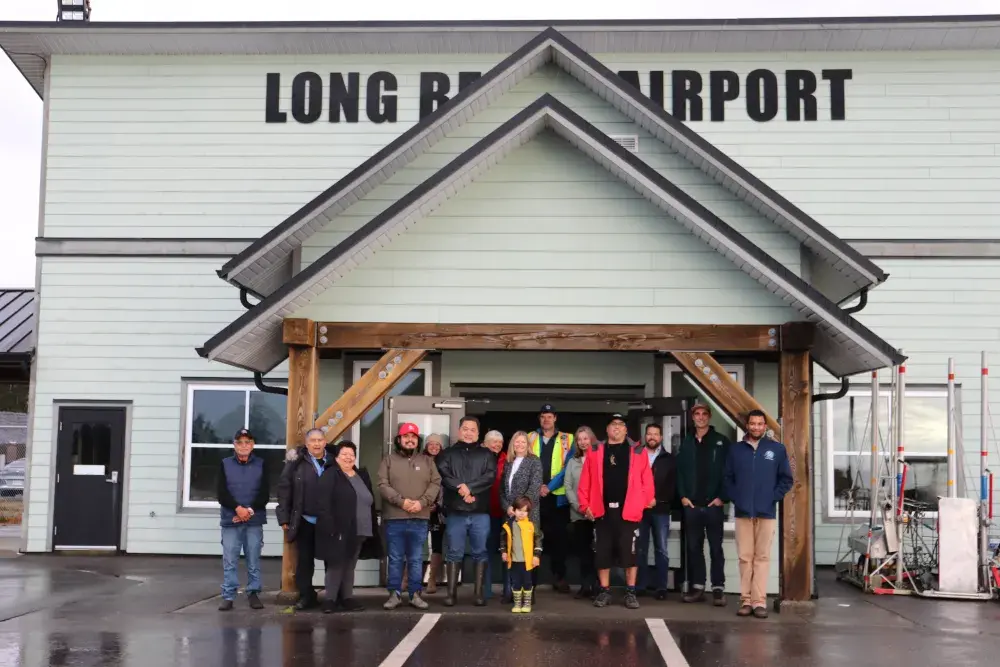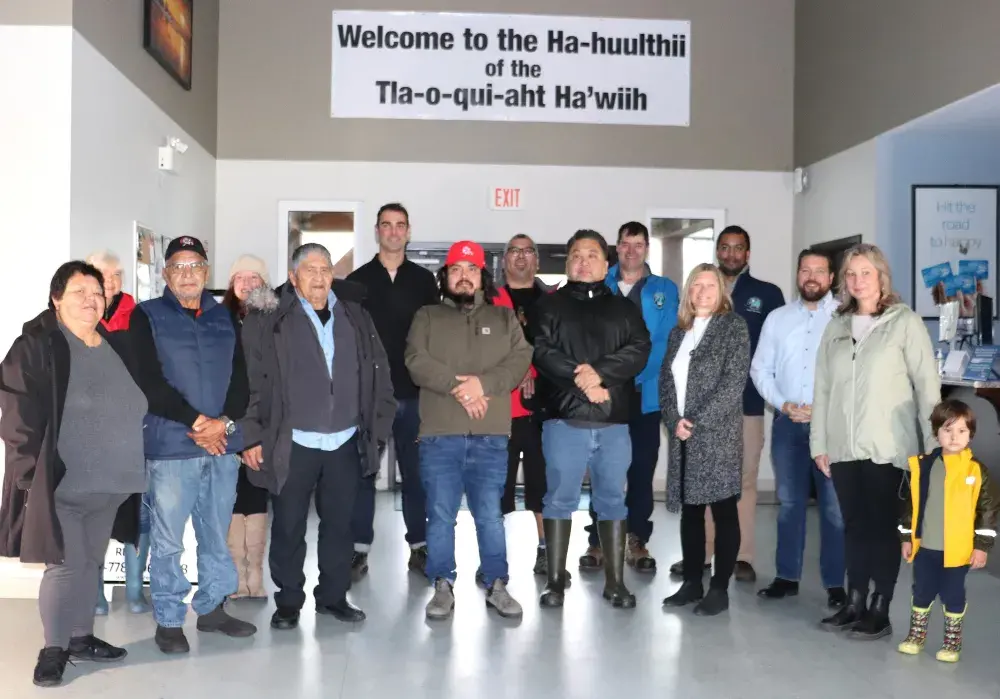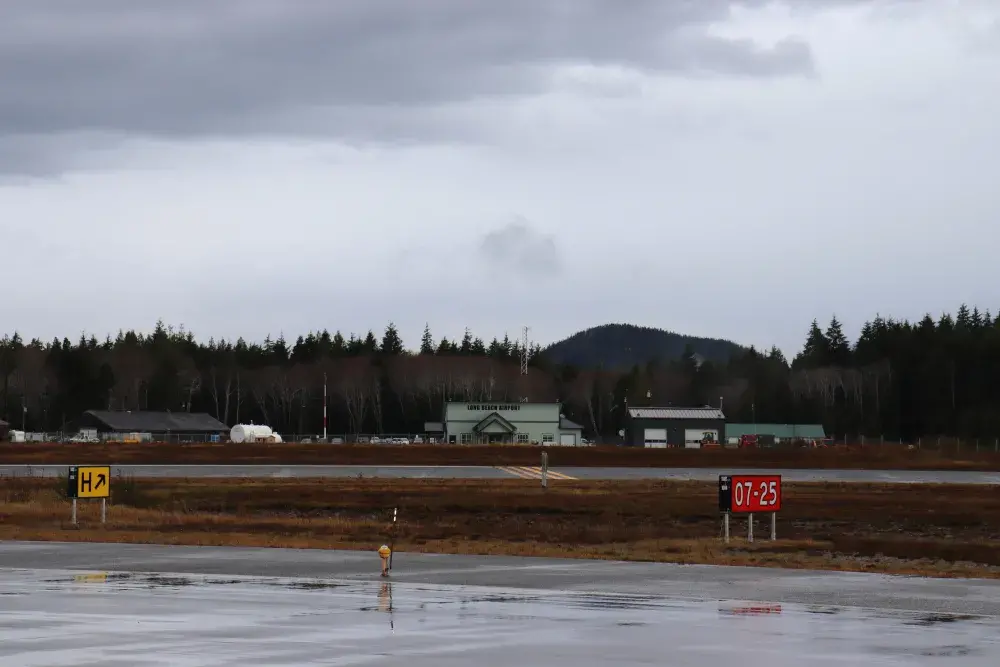With an aerial view of Lovekin Rock holding space in the Pacific Ocean just off Long Beach and endless sightlines of rainforest and mountain peaks, the descent into the Tofino-Long Beach Airport (CYAZ) might be one of the most beautiful landings on earth.
Located within the Pacific Rim National Park Reserve and on Tla-o-qui-aht First Nation (TFN) unceded traditional territory, the Government of Canada built the original CYAZ runways in 1942-1943 for the Second World War.
“The Nation originally supported the development of the airport lands by the federal government with the understanding that these lands and assets would be returned to the Nation at the end of the Second World War,” explained Saya Masso, lands and resources manager with TFN.
In June 2024, over 82 years since borrowing the land, a historic Memorandum of Understanding (MOU) between TFN and the Alberni-Clayoquot Regional District (ACRD), who took over management of the airport in 2000, was signed.
The three-year MOU includes the development of a long-term protocol agreement between TFN and ACRD that will look at lease applications for the site and develop a communications strategy for the terminal.
“This agreement addresses this grievance and advances the relationship between Tla-o-qui-aht and the ACRD and makes efforts towards reconciliation,” said Masso.
Most notably, a new banner that says, ‘Welcome to the Ha-huulthii of the Tla-o-qui-aht Ha’wiih’ greets visitors as they walk through the doors of CYAZ and a framed copy of the Tribal Park Declaration of Meares Island will be on display.
A landing fee of $2.50 per ticket has already been implemented, with all fees collected going to Tla-o-qui-aht as part of the MOU of co-operation.
“It’s a really important acknowledgement,” said ACRD Chief Administrative Officer Daniel Sailland during a Nov. 21 MOU ceremony and tour of the airport.
“Healing the connection to the land is something that is central to the work that we have to do to move forward together. It’s more than an acknowledgement, it’s an act. That action matters as you can see today and we really want this to be an acknowledgement and celebration with the Nation,” said Sailland.
Tla-o-qui-aht Ha'wiih (Hereditary Chiefs) and representatives of the Ha-wiih attended the Nov. 21 MOU celebration.
“This is probably the first time that all of the Ha’wiih have been here at the airport since the grievance took place. It’s an honour today,” Masso said.
haw̓iiḥtaqumł (House of Wickaninnish) thanked Masso for making these relationships come to fruition and she thanked the ACRD for recognizing TFN’s unceded land, acknowledging the Hereditary Chiefs.
“We are always against the idea that we had no rights. With Saya’s persistence, things are slowly paying off. We are slowly getting there. It’s a long-haul,” said haw̓iiḥtaqumł.
“A lot of people aren’t aware that we exist. I recall being kicked out of there when we were kids cranberry picking. You know small things like that,” she continued. “It was great to see this year that we had berry pickers. We sure appreciate that because this used to be a place where we would bring our canoes from Grice Bay.”
One of the unique features of the CYAZ airfields is the abundance of cranberry patches.
“We had a bumper harvest year,” said airport manager Mark Fortune during a tour of airport lands.
Another neat feature can be seen to this day on the original concrete surfaces:
“The aggregate that was used to produce the original runways was dredged from the mouth of the Cypre River. The filters at the concrete batch plant allowed the clamshell debris to be included with the concrete mix. This is why you can still see broken clamshells in the original concrete surfaces at the CYAZ / Long Beach airport,” said Fortune.
There is currently a new hanger under construction at CYAZ, an active float strip for floatplanes and plans for a new terminal are in the works.
The primary runway can handle “large aircraft for emergency purposes”, according to Fortune, and is designated a high ground, safe area. However, as Fortune notes, the site is isolated as the road between Tofino and Ucluelet could be washed out in the event of a tsunami.



